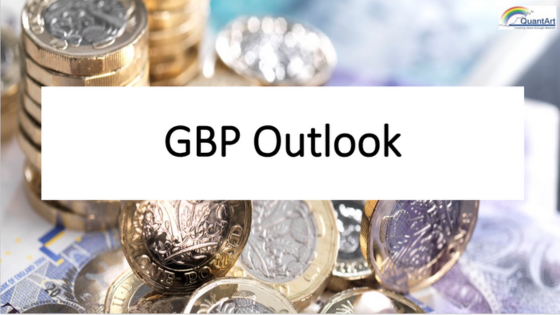QuantArt's Exclusive Reports
We release well researched reports on Global markets-Outlook and Strategies, Global currencies, Commodities, Risk management and Hedging strategies, Hedging instruments and Best practices. Log on to QuantArt Hedgenius to access our full Exclusive Reports.
Global Markets
To read the full report log in to QuantArt Hedgenius.

The Federal Reserve’s dovish stance indicates a potential shift in policy with member dot plots suggesting four rate cuts in 2024, as opposed to the previously anticipated three. The timing of these cuts was a topic of discussion during the FOMC meeting, where Powell didn’t counter the market’s hopes for reduced rates, hinting at the Fed’s belief in achieving a soft landing. Meanwhile, the US inflation rate has stabilized at 3.2% in October 2023, lower than expected, and dipped further to 3.1% in November, aligning with market predictions. However, the inflation rate remains above the Fed’s 2.00% target, posing a risk of resurgence. Despite the inflation reduction, the Fed’s dovish approach may inadvertently lead to increased commodity prices and consumer spending, potentially reigniting inflationary pressures. Fed’s balance sheet tightening further complicates the liquidity situation.
On the other hand, the Indian economy demonstrated robust growth, expanding 7.6% year-on-year in the third quarter of 2023, surpassing forecasts and previous growth rates. This surge is attributed to significant expansions across various sectors, including manufacturing, construction, utilities, and mining, indicating a strong domestic economy. Despite this growth, India isn’t immune to global economic shifts, particularly those stemming from the US. The IMF projects India to be the fastest-growing among all large economies, suggesting a positive outlook, but external factors like the US economic state and inflation rates remain crucial to this trajectory. RBI’s Reserve and Intervention strategy is making a big impact on USDINR.

As we step into 2024, the Eurozone is grappling with a series of economic setbacks. The third quarter of 2023 saw a startling halt in growth, with the region’s economy performing worse than expected, and Germany’s GDP declining by 0.4%. The manufacturing sector is struggling, highlighted by a Purchasing Managers’ Index of just 47.1, indicating contraction for the sixth consecutive month. Business lending has seen its first drop in eight years, falling by 0.3%, while the real estate sector is facing a daunting €176 billion refinancing gap by 2027.
However, it’s not all bleak. The Eurozone’s trade balance improved, swinging to a €11.1 billion surplus from a €28.7 billion deficit a year earlier. This shift comes even as imports declined by 16.3%, and exports fell by 2.4%. Despite high inflation, which saw a brief dip to 2.40% before bouncing back to 2.90%, and the ECB’s interest rates remaining at a 22-year high of 4.50%, there are signs of resilience. The EU also faces challenges related to fiscal spending cuts from 2024.
For a comprehensive understanding and forward-looking hedge strategies on EURUSD and EURINR, check out the full “Euro Outlook and Hedge Strategy January 2024” report at QuantArt’s Hedgenius.

In our January 2024 report, we take a closer look at the British Pound (GBP) as the UK faces a tough economic period with a 0.1% GDP contraction, a significant trade deficit of £4.480 billion, and high inflation rates. Despite efforts by the Bank of England to keep inflation under control, it remains high at 3.9% year over year, down from 4.6% but still nearly double the Bank’s 2% target. Unemployment is relatively stable at 4.2%, but manufacturing activity is slowing down, with the PMI falling to 46.4. This report covers short term and medium term outlook on GBP and provides practical hedge strategies for dealing with GBP in these uncertain times?

In January 2024, the economic landscape is shaped by key currencies: CNY, KRW, JPY, and INR. China’s growth at 4.9% defies expectations, with policies bolstering the economy amidst property and trade challenges. South Korea’s stable growth contrasts with its manufacturing PMI dip, highlighting economic complexities. Japan navigates shrinking GDP and inflation shifts, affecting the Yen. India’s robust 7.6% growth faces trade balance pressures. These currencies mirror the nuanced global economy, each presenting unique opportunities and challenges in the financial world.

In 2023, Turkey’s economy grapples with soaring inflation and interest rates. The Central Bank hikes repo rates to a staggering 40% to combat inflation hitting 62%. Despite these challenges, the economy grows by 5.9%, fueled by capital investment and consumer spending. Yet, manufacturing PMI drops to 47.2, signaling industry struggles. Amidst this, Turkey strives for economic stability, attracting $189 million in foreign investments and reducing its trade deficit to $5.9 billion. This scenario sets a complex stage for economic strategies and foreign investment in 2024.

In October 2023, the Australian and Canadian economies face varied challenges and opportunities. Australia keeps its cash rate steady at 4.35%, despite inflation slightly easing to 5.4%. Economic growth slows to 0.2%, and a trade surplus of AUD 7.13 billion is reported, along with an unexpected current deficit of AUD 0.2 billion. In Canada, GDP contracts by 0.3%, and unemployment rises to 5.8%. However, trade surplus grows to CAD 2.97 billion, reflecting positive investor confidence. Both currencies, AUD and CAD, are expected to fluctuate, with AUDINR moving towards 54-56 and CADINR towards 62 in the next few months.
Commodities
To read the full report log in to QuantArt Hedgenius.
Commodities
As of October 2023, the aluminium market is marked by contrasts. China’s subdued property sector impacts domestic demand, contributing to low European premiums. Globally, production peaks at an annualized rate of 71.2 million tons. LME aluminum prices rally to $2343/ton but are expected to stabilize around $2200/ton in the near term. This outlook hinges on China’s economic growth and burgeoning demand from the EV sector, suggesting potential fluctuations in the market.
As of October 2023, the zinc market presents a mixed outlook. Weak industrial metal demand persists, especially with China’s property sector stagnating. China’s zinc imports have plummeted, reaching their lowest since 2010. Conversely, demand from Singapore spikes, driving up London Metal Exchange (LME) zinc prices, surpassing $2600/ton. Stock levels remain low, and the future price trajectory hinges on China’s economic recovery, particularly in manufacturing and housing. Prices are expected to fluctuate within a $150 range around $2550/ton in the near term, with potential increases if China’s economy stabilizes.
In October 2023, the global steel market exhibits notable shifts. Global crude steel production decreases by 3.72% to 152.7 million tons, with China’s output reducing from 90.8 million to 86.4 million tons. EU’s steel output also falls by 4.4% to 9.1 million tons. China’s decision on steel output limits in Q4 to align with 2022 levels affects iron ore imports, potentially dropping to 96.6 million tons. The US steel industry anticipates a decline in demand for steel scrap, predicting a $30-40/ton decrease in premiums. Market sentiments suggest a softening in scrap prices due to reduced production in China, the US, and the EU, but an expected rise in long and flat steel prices due to improvements in China’s housing and manufacturing sectors. The US steel demand may increase in the next 3-6 months, driven by the green transition and the Inflation Reduction Act.
As of November 27, 2023, oil markets exhibit a cautious trend. Brent crude drops to around $80/barrel and US WTI crude to about $75/barrel. A 20% decline from late September is attributed to increased non-OPEC+ supply and reduced geopolitical risk premiums. Oversupply indications emerge from softening near-term spreads and rising US stockpiles. China’s slowing industrial profits in October further dampen oil prices. The outlook suggests subdued oil prices until December 2023, with potential support from expected Saudi and Russian supply cuts in 2024.
In October 2023, gold prices surge amidst a complex financial landscape. The US Fed maintains a 5.50% rate, bolstering the dollar and affecting Asian currencies. Despite this, gold climbs, supported by central banks’ increased bullion purchases of 337 tons in Q3 2023. The geopolitical tensions add to gold’s appeal as a safe haven, with prices hitting $2,000/ounce. In China, domestic gold prices reach record highs, reflecting economic uncertainties and sustained investor interest. The outlook suggests gold prices will stay elevated due to global tensions and robust central bank buying, despite high US interest rates and a strong dollar.
India’s steel industry outshines global producers with remarkable growth. Global steel production slightly increases, while China, the top producer, sees a decrease. India, ranking second, registers a notable 15.1% year-on-year growth. China’s robust steel exports are supported by government stimulus, and Indian secondary steel market prices rise due to positive Chinese market trends. The US steel industry experiences a positive shift with rising prices, while the UK’s construction sector decline impacts steel demand. Iron ore prices surge, driven by Chinese demand and tight supply. Overall, the global steel market looks bullish, with India and China playing pivotal roles in shaping the industry’s future.
Foreign Exchange and Interest Rates
To read the full report log in to QuantArt Hedgenius.

Discover the latest strategies for Indian IT/ITES exporters in 2024. With the USD-INR rate at 83.25 and a forward rate of 84.65, learn how options like Seagull and Range Forwards offer better flexibility and protection against currency depreciation. This presentation unveils how these options outperform traditional forward contracts, ensuring better financial outcomes in uncertain economic times.

Unlock the secrets to smart borrowing in 2024 with our analysis of global interest rates. Discover why USD, GBP, AED, and INR have higher rates, while EUR, CHF, and JPY are more affordable. Learn how to navigate the tricky landscape of interest rate swaps and currency risk management to optimize your borrowing costs. Our guide provides crucial insights into managing loans in a high-interest rate environment while adhering to local regulations, making it an essential tool for savvy financial planning.

In the dynamic world of 2024, navigating currency markets is more crucial than ever. With USD/INR fluctuating between 81 and 83.40, and pivotal factors like elections, global economic trends, and interest rates shaping markets, understanding these movements is key for exporters and importers. This essential guide dives into setting effective budget rates, considering forward premiums, historical trends, and economic indicators. It’s a must-read for businesses aiming to stay competitive and financially sound amidst currency volatility.
